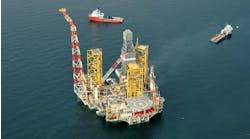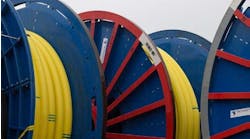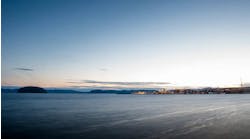Eldon Ball
Senior Editor, Technology & Economics
The effects of the new Safety and Environmental Management System (SEMS) requirements for oil and gas companies operating in the OCS are just beginning to be felt. To get an inside view on just what these requirements include and how they will impact current and future operations in the Gulf of Mexico and other US waters, we talked with Kenneth G. Hurwitz of Haynes and Boone, LLP, Washington, D.C.
Hurwitz
Prior to becoming a partner at Haynes and Boone, he was a partner at Venable in Washington, D.C. where he headed the energy practice. During the mid-1980s, he served as executive director of the Maryland Public Service Commission.
Hurwitz was selected by his peers for inclusion in Washington, D.C., Super Lawyers, Energy Law, 2008-2010.
Following is a conversation betweenOffshore and Hurwitz in which he detailed the regulatory and legal issues facing the offshore industry.
Offshore: BOEMRE now requires operators to provide a Safety and Environmental Management System (SEMS) for oil and gas operations in the OCS. Can you discuss what that explicitly requires – that is, what are the individual components and how often is it updated?
Hurwitz: The Safety and Environmental Management System – SEMS – is essentially BOEMRE’s attempt to impose very, very detailed safety and environmental protocols on operations in the US outer-continental shelf. Understanding the end product the SEMS rule requires an active imagination. Indeed, the SEMS rule requires the preparation of a series of manuals and contingency plans that would fill a large wall of a very large room. The SEMS rule actually sets forth 13 individual program elements that need to be addressed by means of such detailed documentation. Perhaps the 13 areas can be boiled down into six different areas. Those are:
- Facilities and engineering, design, equipment
- Hazard analysis
- Job safety analysis
- Management of change procedure
- Operating procedures, both under normal operations and otherwise
- Training.
Generally speaking, in each of these areas BOEMRE requires operators to prepare all of the pertinent equipment manuals, operations manuals, and contingency planning manuals with a view toward worker safety and environmental impact controls. If you are an operator in the outer continental shelf area, within one year of the effective date of the SEMS rule, you will have to prepare the wall of manuals that I talked about and make them available for audits by BOEMRE. Everything needs to be acceptable to that agency.
Operators must conduct audits of their SEMS program through an independent auditor. And the audit has consequences – within 30 days of completion of the audit, the auditor must submit a report to BOEMRE, and the company must provide BOEMRE with a copy of its plan to address any deficiencies identified in the audit. The audit has to be conducted within two years of initial implementation and then audits have to be conducted every three years thereafter.
There is one further update requirement, and that is in relation to updates that are incident driven. There is a learn-as-you-go aspect. In case of an accident, BOEMRE wants the operator to implement a corrective action program as to root causes of the incident and to update whatever manuals would be affected.
Offshore: We’re particularly interested in the effect on independent operators. Will the new regulatory requirements place a heavier burden on independents – because of their limited size and resources?
Hurwitz: The short answer is “yes.” But let me start with some comments about the burdens on the majors and super-majors.
A lot of the companies that operate offshore are global enterprises. They not only comply with their own internal company global standards, but they also they are also subject to a number of regulatory regimes around the world. If you’re talking about a Shell or a ConocoPhillips or an ExxonMobil, you are talking about companies probably that already have some variant of a SEMS rule in place.
With the issuance of the mandatory SEMS rule by BOEMRE, you have a situation where the majors now have to review what they have in place to see if it complies with the mandatory rules. For them it is a question of looking at what they already have in place and potentially revising it. It is interesting, and perhaps a little frustrating, that there’s no process by which BOEMRE can look at an existing SEMS-type program and evaluate whether it substantially complies with the new SEMS rules.
So, even for the majors there’s a bit of a burden as to the new SEMS rule, but the rule presents a much greater burden for the independents. As you know, independents are quite significant players in the Gulf. For example, in 2009, 284 independent operators accounted for 73% of Gulf of Mexico production, which is a dramatic and perhaps surprising statistic. And unlike the majors who operate in the Gulf, for which Gulf operations might be 20% or less of their total worldwide operations, for most of the independent operators the Gulf represents 100% of their operations. So, the risk of imposing burdens on the small independents potentially could threaten a substantial amount of offshore oil production. In other words, there could be a crushing or even fatal effect.
Let’s focus once more on the burden itself. Given what I said at the outset, the rules and the paperwork aspect are extraordinary. And given that independent operators are less likely to be subject to regulatory regimes around the world and perhaps less likely to have an internal compliance regime already in place – the compliance burden on independents is much greater. And the time for completing a SEMS program is also unforgiving. A year is not much time to do the kind of documentation that is required.
Offshore: Do you expect further legal challenges to the new BOEMRE regulations, rules, and requirements?
Hurwitz: One can bring challenges to BOEMRE’s regulations both on procedural and on substantive grounds. But sometimes these challenges are futile.
For example, a substantive challenge that we’re all very familiar with was the successful challenge of the first moratorium that was brought before the Louisiana U.S. District Court and resulted in the issuance of a preliminary injunction. The court held that the moratorium was arbitrary and capricious because, essentially, BOEMRE did not base its decision to stop deepwater drilling on a sufficient factual record, particularly as to whether any imminent danger existed as to the numerous non-BP rigs that were operating in the Gulf, and because of BOEMRE’s failure to consider a less burdensome alternative.
In other words, there could have been a less draconian alternative for handling these other operators short of a moratorium.
But look what happened in that case. After the first moratorium was enjoined, BOEMRE promptly went ahead and issued a second moratorium. And the issuance of the second moratorium wound up having the desired effect of bringing deepwater drilling to a halt. BOEMRE was later found to be in civil contempt and was required to pay legal fees, but the bottom line is that the agency got what it wanted—legalities aside. Deepwater drilling was stopped until the agency lifted the second moratorium in October.
And that’s the theme I have seen over and over again. When one does litigate against BOEMRE, one may win the battle, but one is less likely to win the war. That is what also happened with respect to NTL 5, the notice to lessees that covers blowout preventer inspections, maintenance certifications, verification of the performance of blind shear rams, and certain requirements as to well design and construction.
An action was brought to enjoin NTL 5, in the same Louisiana District Court that heard the injunctive action against the first moratorium. The court actually invalidated NTL-5, saying that the notice to lessees should have been preceded by notice and opportunity for comment because it set forth new substantive requirements that were neither in previously enacted BOEMRE regulations nor in the Outer Continental Shelf Lands Act. So the court enjoined the effectiveness of NTL 5.
But lo and behold, five days before the court’s ruling, BOEMRE had already issued the final interim rule, which contained most of the requirements that were contained in NTL 5. The litigation was carried out; indeed, in one sense, the litigation was successful, but BOEMRE – as was the case of the moratorium – succeeded in issuing the same regulatory requirements in a new and improved form. So, one can litigate, and one can even win the battle, but the agency is extraordinarily adept at winning the war.
There is one more example. The interim final rule that I just mentioned was issued on October 14, 2010, and it became effective, without industry comment, immediately. Why? Because BOEMRE found there was good cause for doing so – because the problems experienced with respect to the Macondo well blowout preventer, casing, and cementing practices, were very unlikely to be unique. In other words, according to BOEMRE, there was an imminent industry-wide danger. After the rule became effective, the agency accepted industry comments and ultimately will issue a “final final” rule.
So once again we have the familiar pattern – even if BOEMRE acted contrary to law in issuing the immediately-effective interim final rule, and a litigant successfully challenged BOEMRE’s procedure, the “final final” rule would likely be upheld because industry had the opportunity to comment. Once again, the agency might have acted illegally, but it pulled a rabbit out of its hat and got the result it wanted.
The bottom line for potential litigants is this – unless one believes that it is important to slap around the agency a little bit to keep it in line, victories are likely to be Pyrrhic and the glow of success somewhat short-lived.
Offshore: Other than new requirements for operators, are there additional regulations and requirements for non-operators – equipment manufacturers, service companies, marine transportation, etc.? Or does all responsibility fall back on the operator?
Hurwitz: You raise an interesting issue. Indeed, one of the key observations of the President’s Commission on the BP Deepwater Horizon Oil Spill and Deepwater Drilling was that regulation had failed to keep up with the vastly increasing numbers of role players in the outer-continental shelf. Let me first focus on the Interim Final Rule, which sets forth new prescriptive requirements relating to well bore integrity and well control equipment.
Indeed, the Commission has a point. In many instances, both the Interim Final Rule and the existing rules that it modifies contain bottom line requirements that apply to unspecified individuals.
The rules often say that “you” must do something; for example, that “you” must ensure that a certain well casing or cementing requirement is met. But the rules do a poor job of defining, pardon the poetry, just who is “you.” One might call this a “jump ball” approach to regulation, but unlike in basketball, it’s unlikely that anyone wants to wind up holding the ball.
In the SEMS rule, by contrast, BOEMRE focused like a laser on the operator, targeting the operator with responsibility to meet the rule’s detailed requirements.
But the rule also requires the operator (who can be a lessee, the owner or holder of operating rights, or the designated operator) to function as a “super” safety and environmental integrator. In other words, operators are directly held accountable for the overall safety of the offshore facility -- the operator has to ensure that all contractors and subcontractors have safety policies and procedures in place. The rule directly targets the operator, but the operator must regulate the behavior of numerous contractors and subcontractors. And it will have to do so by making sure that its private contracts with contractors and subcontractors properly allocate safety and environmental responsibilities.
Indeed, overall, through the SEMS rule, it seems that BOEMRE is attempting to change the safety culture of an entire industry. But it all begins with the operator.
I want to make one additional comment about BOEMRE’s regulatory approach: BOEMRE is not only concerned with safety culture across the industry, but also within organizations. One device it is relying on is officer certifications.
For example, NTL 10 requires operators of deepwater facilities to state that they will conduct all authorized activities in compliance with all applicable regulations, including the Interim Final Rule. The officer certification is important because it forces the person making the statement to make sure that compliance responsibilities will be met up and down the ranks of the organization. Or the officer making the statement will be “on the hook.”
Offshore: Getting back to the certificate of compliance that you mentioned. Are there criminal penalties associated with enforcement of that requirement?
Hurwitz: I have not researched that specifically, but no doubt there will be some serious consequences for false statements. The other thing to notice about the NTL 10 certification is that it also looks to the future. It’s not just a statement that we are in compliance today; rather, the certification has to state that we will be in compliance continuously into the future. And that places an additional burden on management. One can appreciate the perils and the challenges of having to make such a statement. Especially when the industry is charged with new and overlapping regulatory requirements.
Offshore: Can you comment on the de facto slowdown in permit applications? I have anecdotal reports of new requirements being requested for additions to platforms, for example, that increase the workload and time required for completing permit applications, but I’m not aware of anything official.
Hurwitz: Exploration plans and drilling permits are certainly moving more slowly than they did in the past. One cannot argue with that. And while there have been some encouraging signs of late, such as BOEMRE’s granting Noble’s application for a permit to drill, I think BOEMRE will continue to move slowly and deliberately.
There are numerous pending exploration plans, and numerous applications for permits to drill that have not been acted upon. And while a court might force the agency to act, there’s no guarantee that plans or applications will be approved. So, things are going to continue to move at a snail’s pace. Moreover, my sense is that BOEMRE will also proceed with announced plans to issue a number of new safety rules, although it is not likely to do so on an emergency basis. And BOEMRE is likely to place added emphasis on environmental reviews, in contrast to relying on categorical exclusions, as it has done in the past.
Stepping back, it appears that there are three underlying systemic reasons why BOEMRE will continue to move slowly. First, there are a lot of new requirements that require a lot of judgment calls, so there’s a natural tendency for the agency to move slowly and prudently to make sure all of the new requirements are properly met.
Second, the agency is not going to receive a lot of new funding, so you have the same number of staffers you had under MMS (Minerals Management Service, the organization supplanted by BOEMRE) with a much greater body of regulatory requirements to administer. Staff is underpaid and overworked. And in their case, this familiar complaint is actually true.
Third, I think there’s a cultural aspect in that you have a new agency head and he has emphasized the need for internal audits, and strict conflicts of interest rules, and these things probably make it more difficult for employees to stick their necks out.
Michael Bromwich, BOEMRE’s director, has said that he is trying to empower his employees to do what is required under the new regulations and allow them to carry out their business. He wants them to understand that they can do their jobs without fear of being made into sacrificial lambs if an incident occurs subsequent to an approval being issued. But he’s walking a fine line between reforming the agency and yet empowering BOEMRE staff to do its job.
It’s unfortunate that the offshore industry and the nation’s energy resources will have to pay the price.
Offshore Articles Archives
View Oil and Gas Articles on PennEnergy.com




